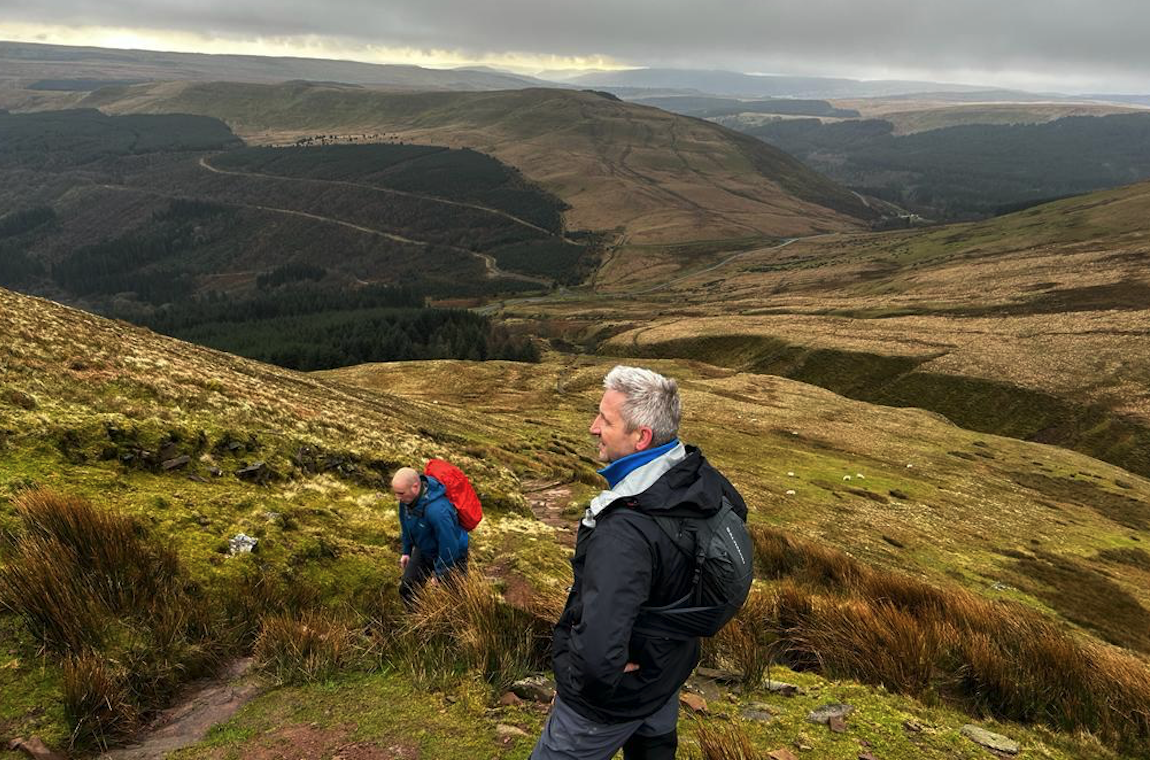16 April 2024: Pat Coxen, CEO of Cornerstone, shares his experience of an emergency services call out in Bannau Brycheiniog (formerly Brecon Beacons) National Park, which underscores the importance of mobile infrastructure and connectivity in rural and remote areas.

Interest in heading out for walks and climbs has soared in recent years, and with that, rescue call out numbers are increasing. Often, we see these incidents reported online or in the news, but there is nothing like a real-life experience to bring home the importance of mobile phone coverage in potentially life-threatening situations. On a cold weekend in mid-February, the CEO of Cornerstone, one of the mobile infrastructure companies working on delivering masts as part of the Shared Rural Network, was able to see first-hand the life-saving benefit that mobile infrastructure and mobile networks bring, even in the most remote areas on an everyday basis.
“I feel very privileged to be close enough to walk or run in Bannua Brycheiniog National Park in Wales. I headed there with a friend for a quick walk around and over Pen Y Fan, and despite the wet, we were thoroughly enjoying the walk. As we descended one of the steepest tracks on the route we noticed a small group of walkers on the side of the path.
A lady in the group had slipped and fallen and was in significant pain with a broken ankle, leaving the group a difficult walk/carry of at least three miles to the nearest car park and much further to a town. It was clear to everyone that the lady was not going to be walking anywhere, so the only option was to call for emergency services.”
Very helpfully, the area of the incident had mobile coverage (something not everywhere in the Park benefits from) and the group leader was able to call the emergency services for help. Using the mobile network enabled location-sharing app, What3Words, they were able to very simply, without a map grid reference, share their location and get medical support and guidance from the rescue services. Not long after, the group watched the emergency services helicopter fly in to pick up the casualty and head off to for treatment.
Reflecting on the incident, Pat remarked, “We know that building the infrastructure needed for mobile phone companies to make coverage available to consumers is important, especially delivering coverage in rural areas that have traditionally had less, or no coverage. However, when we are so focused on delivering the necessary infrastructure, we can sometimes get a little detached from the real reason we are doing the job. I have no doubt that access to mobile coverage significantly sped up the rescue of the injured lady and gave some medical comfort to the rest of the group that she was going to be ok”.
“Mobile infrastructure companies can be met with opposition when building mobile phone towers. Communities and special interest groups raise visual and environmental concerns about the potential impact of masts in remote areas and we take care to listen carefully and respond to those concerns. At the same time, it is also true that most people rely on connectivity to live their lives and therefore the infrastructure is not ‘nice to have’, it is essential. Mobile and fixed infrastructure and mobile phone companies are building for an inevitable future where digital connectivity will need to be ubiquitous. Connectivity isn’t just about making calls or sending messages. It enhances safety, builds connections, drives economic activity, and not only changes lives, but saves lives.” states Coxen.
Looking to the future he is clear that “technology and nature can and must co-exist” and this is an important balancing act; “we must find the right balance between progress with preservation, delivering the transformative power of digital technology, whilst preserving the natural beauty of the countryside. As other European countries upgrade their infrastructure, maintaining pace is crucial to ensuring Britain remains at the forefront of innovation. Seeing first-hand the importance of having mobile coverage, only reinforces the need for programmes such as the Shared Rural Network in delivering connectivity in remote and rural places across the UK.”


